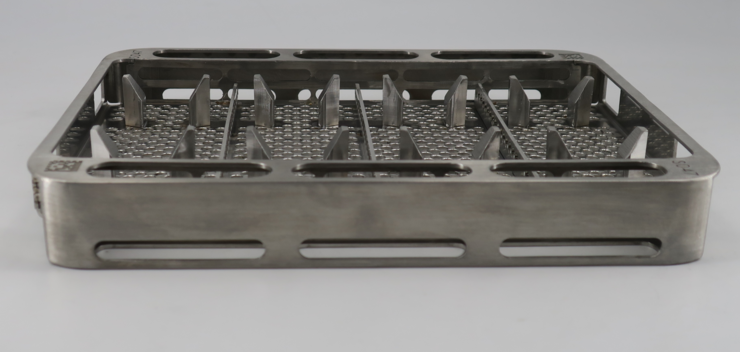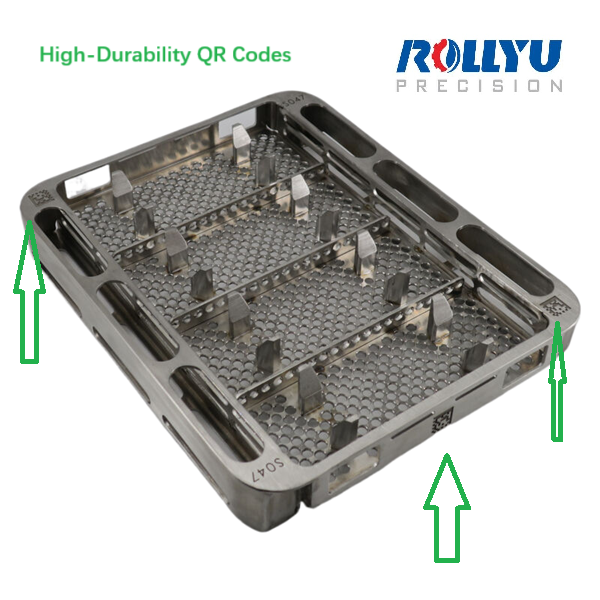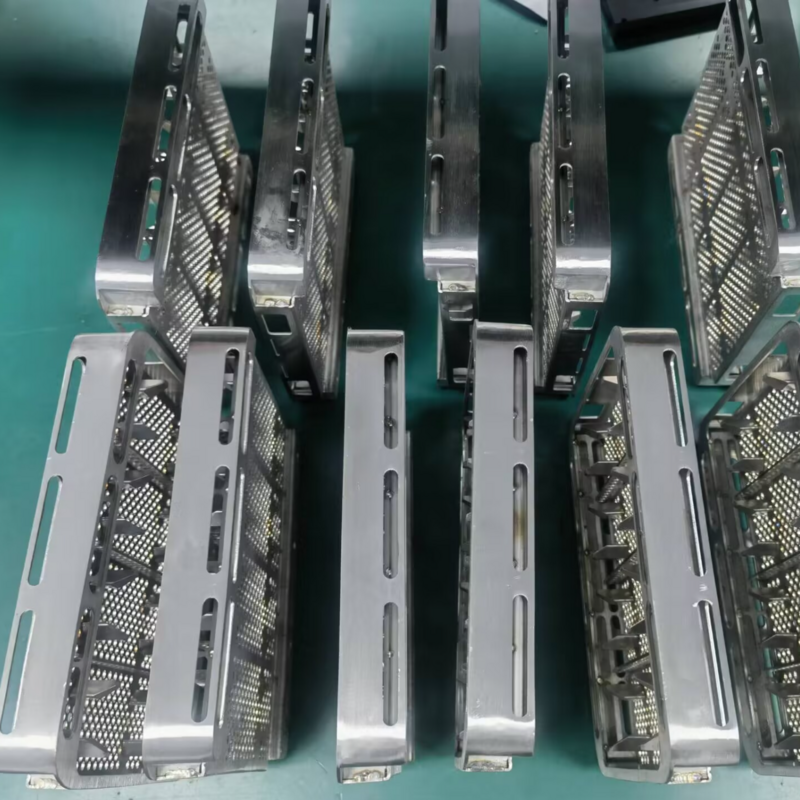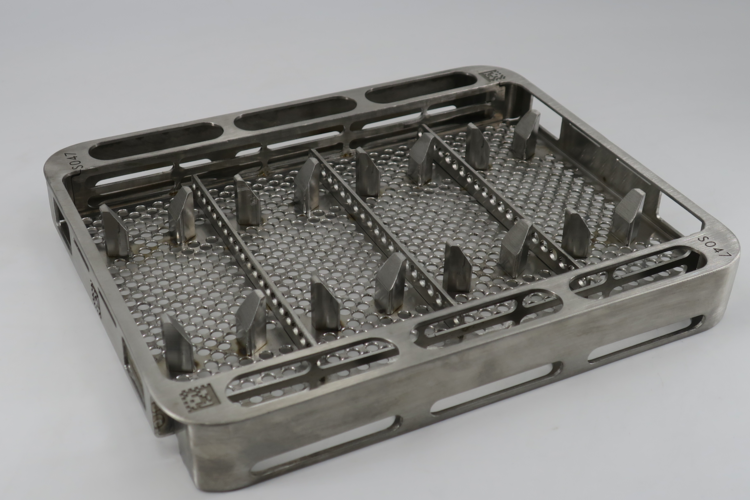Apr. 02, 2025
In the dental equipment industry, maintaining product traceability, meeting regulatory standards, and ensuring smooth day-to-day operations are essential. Sterilization trays, which are used repeatedly in clinical environments, must endure high-pressure steam sterilization and aggressive chemical cleaning. Throughout this process, their QR codes must remain intact and scannable to comply with Unique Device Identification (UDI) requirements.
For manufacturers working with robust materials like 6.5mm-thick AISI 321 stainless steel, achieving long-term QR code readability is a significant challenge. At Rollyu Precision, we address these challenges with specialized laser marking techniques that deliver reliable performance and long-lasting clarity.

AISI 321 is a titanium-stabilized stainless steel valued for its corrosion and heat resistance. However, its reflective surface can scatter laser energy during engraving, making it harder to achieve consistent marking quality.
Engravings that are too shallow may wear off quickly with repeated sterilization. On the other hand, deep engraving can trap contaminants, posing hygiene risks and interfering with accurate scanning.
Laser markings on untreated stainless steel often appear faint under surgical lights. This can lead to scanning failures during routine instrument checks. The solution lies in black marking, or laser annealing, which creates high-contrast, oxidation-resistant QR codes without altering the metal surface.
Repeated sterilization cycles at 121–134°C can accelerate oxidation in marked areas, especially if the surface has not been properly treated post-marking. This can reduce code legibility over time.
Disinfectants such as peroxides and phenolic solutions are known to degrade improperly treated QR codes. Without protective measures, fading becomes inevitable, leading to premature equipment replacement.

When QR codes fail, the consequences extend far beyond a scanning error:
Manual tracking increases staff workload and introduces errors
Compliance with UDI and medical device regulations may be compromised
Equipment traceability becomes unreliable, affecting quality audits and recall readiness
Worn markings undermine product quality perception and brand trust
Workflow disruptions can delay treatments and reduce clinical efficiency

To help clients address these issues, Rollyu Precision applies advanced marking processes customized for demanding medical environments:
Fine-tuned for deep, stable markings on thick stainless steel with controlled heat input to avoid metal distortion.
Generates dark, oxide-rich QR codes with excellent contrast—resistant to fading, even after thousands of sterilization cycles.
Reinforces the corrosion resistance of the laser-marked area, maintaining the integrity of both the code and the base material.
Each QR code is verified for contrast, clarity, and scan success rate before it leaves our facility—ensuring consistency across batches.

This isn’t just about technical engraving—it’s about performance, trust, and compliance. Manufacturers and medical professionals who choose a durable solution benefit from:
Reduced maintenance and tray replacement frequency
Reliable compliance with international standards (FDA, ISO 17665, UDI)
Lower risk of cross-contamination from misidentified or misused trays
Enhanced brand reputation in the highly competitive dental equipment market
Greater confidence from end users, leading to long-term business relationships

At Rollyu Precision, we help dental device manufacturers and suppliers deliver quality that lasts. Our QR code engraving solutions are engineered not only to meet regulatory standards—but to exceed expectations in real-world clinical use.
To learn more or request a sample engraving for your trays, visit us at www.rymachining.com or reach out to our team info@rymachining.com today.